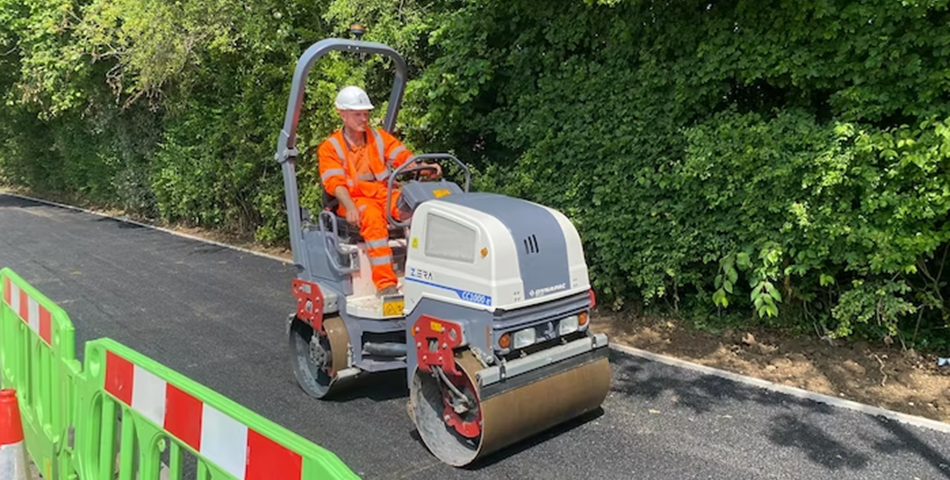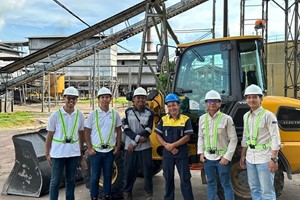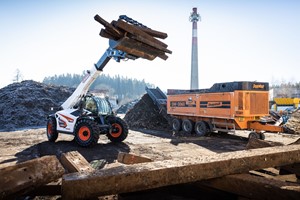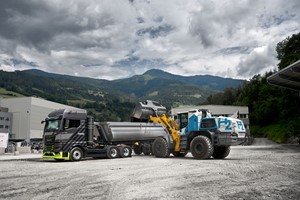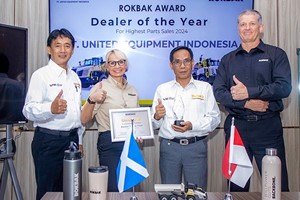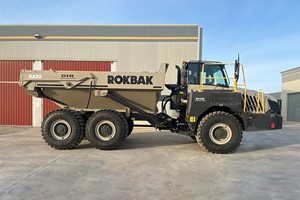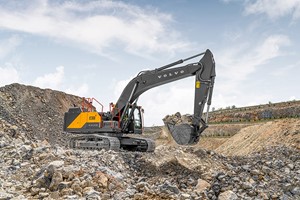Dynapac introduced the world’s first emissions-free battery-powered asphalt compactor more than a decade ago, and now the company is ready to bring two electric tandem-drum vibratory compactor models to market next year, including in the United States.
The prototype machine that was nominated for an Innovation Award at the 2012 Intermat show in France didn’t gain much traction in the industry and not much press either.
“Obviously the market wasn't ready for it at that time,” says Nino Katadzic, Dynapac project manager for electrification. “It was just a prototype and didn't go any further.”
But a lot has changed in the industry and the world since 2012, as climate-change concerns and advancements in battery technology are making zero-emission cars, trucks and, gradually, construction equipment a viable alternative to internal-combustion engines. Manufacturers in recent years have rolled out electric compact excavators, compact wheel loaders, compact track loaders and skid steers for sale or as prototypes.
You can now add tandem vibratory-drum asphalt compactors to the list. Dynapac recently launched a limited edition of its new Z.ERA CC900 e and CC1000 e rollers to the market, with full-scale production set for 2023. Dealers and customers in the U.S. should start seeing the compactors by Spring 2023. Those attending ConExpo 2023 can catch a glimpse of the new battery-powered machines. Hamm also plans to launch its new electric tandem rollers at this year's Bauma show in Germany.
Equipment World spoke September 21 with Katadzic and Lars Lundahl, Dynapac product manager for asphalt rollers, about the new electric compactors, how they compare to their diesel counterparts and the market for zero-emission road equipment. (To watch the CC900 e in action, check out the video at the end of this story.)
The Electric Rollers
The CC900 e and CC1000 e tandem-drum vibratory asphalt compactors are based on their diesel counterparts of the same model, minus the “e.” The models’ numbers represent drum width in millimeters. They are designed for repair work, sidewalks, bike lanes and can follow a small paver.
A full season of tests of the rollers have been conducted and concluded in Sweden, the United Kingdom, The Netherlands and Norway.
Unlike the all-electric prototype Dynapac first released in 2012, the new rollers have hydraulics. The company used the prototype as a starting point more than two years ago when it formed a team to develop the new rollers for market.
Dynapac says it has seen the same performance as its 24-horsepower diesel-powered hydraulic machines and no adverse effects to the batteries from vibration. Battery runtime has also allowed for a full day’s work without recharging.
“We can do more than a full day of work in its typical application,” Lundahl says. “We had between 20% and 30% left in the battery every evening.”
The compactors have two charging options. A one-phase 120- or 230-volt charger is used for overnight charging, about 6 hours, to charge the battery. The fast option is a three-phase 400-volt charger, which would not be available for the U.S. “We are still looking into what it should look like for the U.S. market,” says Lundahl. But he adds that most applications would not necessitate a fast charge during the day.
Dynapac developed the battery technology in a joint venture with a third-party company they declined to name. The price of the rollers is expected to be on par with other electric equipment, at about two-and-a-half to three times more than a comparable diesel machine.
But as with other electric equipment, there are significant savings, such as no diesel fuel costs, no oil or fuel filters to replace, and no oil, coolants or other fluids to change. The rollers will have hydraulic oil and filters to switch out from time to time. The company estimates a savings of 60% to 70% on costs versus diesel.
The Real Reason For Electric
But as climate change leads to more calls for zero greenhouse gas emissions, the presence of electric construction equipment will likely increase on jobsites. The equipment also has an advantage for working in crowded urban areas and indoors, not only due to zero emissions but because they produce significantly less noise. The rollers are geared to utility contractors and the rental market.
Lundahl noted that Oslo, Norway, and some areas in the Netherlands are already going beyond zero emissions on cars and calling for the same on construction sites. In time, Dynapac sees increased demand for electric equipment occurring in the U.S., and for that reason, the company will also bring the battery-powered CC900 e and CC1000 e to market in North America next year.
The company is also exploring battery power for larger compactors but does not yet have a timeline on when they would be ready for market.
“This is just the beginning,” Lundahl says. “We are already looking into other equipment. But it was natural to choose the smaller equipment first due to the working cycle. When you go up to the bigger equipment, you will be more dependent on the charging infrastructure, because on the bigger machines, I think it will be difficult to avoid charging at least one time during a full working day.” That’s especially true for large compactors that roll continuously behind the paver.
The company is also looking at other technologies, such as hydrogen, in its quest for zero emissions. A mix of technologies is being harnessed, but electric at least in the foreseeable future will likely be the leading method.
“Just drawing a parallel to the automotive industry, looking let's say back from 2010, the amount of electric vehicles out at that time and looking at that graph to today, it's an exponential development,” Katadzic says. “It's gone really fast, and I believe that will be for the construction business, as well. It might look like that.
Don McLoud




